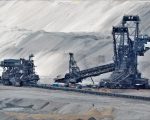The jury’s out as to whether artificial intelligence (AI) is a harbinger of large-scale job losses, social unrest and even the extinction of humanity, or the dawning of a revolution that sees the robots replace the mundane tasks and improve industrial productivity for the benefit of all humanoids.
But what’s for sure is that AI is not like the Betamax video format or Segways: it’s not headed for redundancy in a hurry.
Naturally, investors are scrambling to find the best listed AI exposures – a task that ironically is best suited to dispassionate ‘bots.
Roughly speaking, the ASX-listed AI sector is split between tech providers developing AI tools and non-tech companies – anything from miners to bankers – and those using AI to improve their existing business.
Plenty of hype and trumped-up claims are emerging, so investors need their old-fashioned BS detectors on a high setting.
Investor interest in AI has centred on the Nasdaq listed chip maker Nvidia, which makes the computer hardware and chips that can process billions of calculations simultaneously – and many time faster than the previous iterations.
Nvidia now bears a $US1.05 trillion market cap – more than the GDP of several African nations with Tasmania thrown in.
On a vaguely similar note, ASX-listed AI pioneer is Brainchip (BRN) is commercialising Akida, a neuromorphic process to provide and improve data to develop machine learning and AI products.
The tech also has something to do with ‘spiking neural networks,’ which is all too much for your columnist’s conventional grey matter.
But given Brainchip’s $600 million market cap, investors are convinced about the prospects of the company that generates some revenue, but also deep losses.
Valued at a shade under $1 billion, Weebit Nano (WBT) develops “resistive Random-Access Memory technologies which are a specialised form of non-volatile memory for the semiconductor industry.”
Er – right. In April Weebit raised a chunky $60 million via a placement and “upsized and scaled-back” share purchase plan, so once again investors get it – sorta.
With a $250 million market cap, Nuix (NXL) provides investigative analytics and intelligence software with a charter of “finding truth in a digital world”.
The truth is out there – but in the zeros and ones rather than at a Roswell UFO convention.
Broker RBS highlights the handmaiden tech stocks: those that will facilitate AI rather than develop the core breakthrough technology.
NextDC (NXT) builds the data centres (DCs) to store and provide the massive amount of computer oomph (and electricity) required. The stock is feeling the love, up 38 per cent since the start of the year and now worth $6.3 billion.
“Future data centre workloads will likely be multiples of current levels, leading to materially higher demand for DCs that are capable of providing the required data storage and [computer power] to support generative AI,” RBC says.
Formerly Macquarie Telecom, data centre peer Macquarie Technology Group (MAQ) last month completed a mammoth $130 million raising to expand its data centre presence to capitalise on – you guessed it – “cloud and AI megatrends.”
Further along the AI superhighway, Megaport (MP1) provides the networks for data to travel efficiently from the DCs, thus avoiding massive traffic jams. Megaport is valued at $1.5 billion after a recent strong run.
Alternatively, exchange traded funds (ETFs) enable a diversified and global entrée into the sector – or at least the closely related fields of automation and robotics.
Exemplars are the ASX are Betashares Global Robotics and Artificial Intelligence ETF (ASX: RBTZ) and Global X’s Robotics and Automation ETF (ROBO).
The selling point of ETFs is they avoid the single-exposure risks in picking one or two AI stocks. And we don’t need Chatbot to remind us that they will not all be winners.
Disclaimer (courtesy of Chatbot): AI is a relatively new field and is subject to rapid changes and technological disruption, which could impact the performance of AI companies in the future.















